Collection of honey and pollen in orchards (garden gardens)
Collection of honey and pollen from apricots
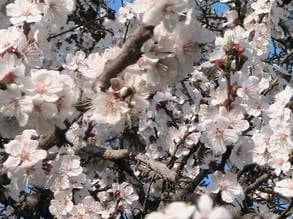
Apricot is a tree of the Rosaceae family. Her bark is dark, brownish-gray. The branches are bare, the leaves are holistic, with long cuttings. Flowers are almost sessile, develop before the appearance of leaves.
The petals are white or pink. Fruit is a juicy, fleshy drupe. It grows in the zone of the Steppe, Crimea, less often in the zone of the Forest-steppe.
Apricot blossoms in late April for 9-11 days. Nectaries of her are placed near the ovary. This is one of the earliest medonos. Tree flowers are readily visited by bees. Collected nectar and pollen they use completely, because during this period, bee colonies develop intensively.
One apricot flower releases 0.7-1.2 mg of sugar in nectar, honey production of 1 ha of plantations – 35-40 kg.
Collection of honey and pollen from gooseberry
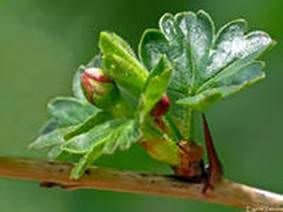
Gooseberries are common – the bush is a family of lomikamene. Leaflets are regular, three and five-lobed, jagged. Brushes are bunch-like, one – and three flowering. Flowers are greenish, reddish or purple, pubescent. The fruit is spherical or oval. Gooseberries are quite common in Ukraine.
He blossoms in the third decade of April – in early May for two weeks. Bees willingly visit flowers, collecting nectar and pollen.
Gooseberries – one of the best honey-plants among the berry crops (nectar productivity is second only to raspberries).
Honey productivity of 1 hectare of gooseberry is 40-45 kg. However, in early spring, bees on gooseberries are very often excited by weather conditions. Gooseberries give early spring supported honey.
Collection of honey and pollen from the cherry
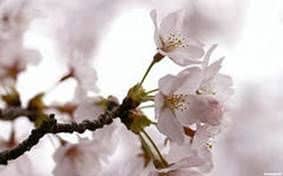
Cherry is an ordinary tree with a spherical crown from a family
Cherry blossoms in May for 10-12 days. The nectar of it not only strengthens bee colonies, but can also provide commodity honey. Better it stands out in warm weather in the morning.
One cherry flower produces 2.59 mg of sugar in nectar, and honey production of 1 ha of plantations is 28-32 kg. Cherry also provides bees with pollen.
Collection of honey and pollen from a pear
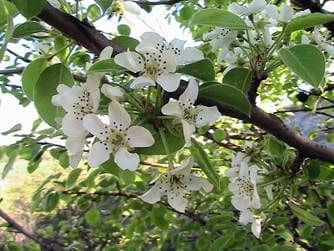
Pear is an ordinary- tree with a family of pink flowers. Leaves are egg-shaped. Inflorescence 2- 12-flowered, flowers white or pale pink.
In the wild it grows in light deciduous forests, on the fringes of the whole Ukraine, except for the regions of the irrigation Steppe.
Pear blooms in late April – early May (10-12 days). It gives bees nectar and pollen. Depending on the variety, one flower can extract from 0.53 to 0.97 mg of sugar in nectar.
Honey productivity of plantings -20-25 kg / ha. A wild pear produces more nectar and is more actively visited by bees. Under favorable weather conditions, they work on wild pear flowers throughout the day. Provides bee colonies supported by honey.
Collection of honey and pollen from a raspberry
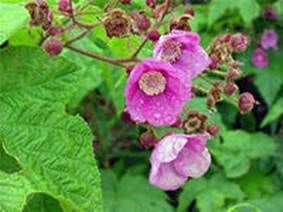
Raspberry common – a bush with a family of pink flowers. Leaflets are triple or more often odd-pinnate. Flower-bearing branches are shortened, only with triple leaflets. Flowers are bisexual. Petals erect, whitish. The fruits are red, sometimes yellow.
It grows in the forests, along bushes, in the forest floodplain meadows. It is cultivated quite widely. Blossom raspberry a month after the appearance of foliage, in the third – the fourth decades of May.
When raspberry blossoms, a lot of nectar and pollen are released. Bees throughout the flowering period actively visit raspberries, staying on it from morning till evening, and sometimes even after sunset.
One flower excretes 0.34-0.40 mg of sugar in nectar, honey production of 1 ha of continuous thickets – 70-90 kg. Raspberry grasses are a rich source of marketable honey.
Raspberry honey of light amber color, has a pleasant delicate floral aroma, sweet to taste. Contains 26% of glucose, 46% of fructose. The diastatic number is up to 10 Goth units. In a rare state, it is stored for nearly a year. Crystallization is fine-grained.
Collection of honey and pollen from plums

Plum garden – a tree with non-drooping branches of the family rosy-colored. The leaflets are elliptical or egg-like. Flowers are single, petals are greenish white. Fruits are elongated, hanging, with a blue povolock, different in color and size. Bloom plum in early May, 2-3 days earlier than cherry.
A single flower can live 5 days, and the flowering of the massif lasts 8-10 days. Plum flowers give nectar and pollen and are visited by bees quite actively.
One flower produces 1.26-1.30 mg of sugar in nectar, honey production of plum garden is 20-23 kg / ha. For bees, the early spring honey harvest is maintained.
Collection of honey and pollen from the currant

Red currant – bush from the family of lomikamenevich. Leaflets with short shovels. The flowers are open and noticeable, greenish or yellow, regular, 4 to 6 collected in a brush. Flowering currant in May. Access to nectar is better than black currant, and therefore flowers, other than bees, are visited by other insects. Honey productivity of plantations is 23-25 kg / ha. For bees, it is supported by honey.
Black currant – a bush from the family of lomikamenevich. The shoots are pale yellow, brown at the end of summer. Brushes are limp, long, 5-10-flowered. Flowers are lilac – or pinkish-gray. Berries are spherical, black.
In the wild it grows on the banks of rivers, forests, bushes in the Carpathians, the Carpathian Mountains, Polesie, in the Forest-steppe. Widely cultivated as a fruit-bearing plant.
Blossoms black currant in late April – early May for 8-10 days. Its nectar is mainly used by honey bees.
Honey productivity of the berry is 30 kg / ha, but varies depending on the variety. For bees, the early spring honey harvest is maintained.
Collection of honey and pollen from sweet cherries

Cherry – a tree with a family of pink flowers. Leaflets egg – or ellipsoidal. Flowers are collected in a few-flowered inflorescence. The petals are white.
It grows wild in broad-leaved forests, on the fringes of Transcarpathia, Carpathians, Forest-Steppe, Steppes.
Blossoms cherry in April, gives nectar and pollen for bees. Among other stone fruits, it ranks first in productivity. Under favorable weather conditions, one flower can allocate 1.88 mg of sugar in nectar, and 1 hectare of plantations ensure the collection of 40-45 kg of honey.
Almost all the honey collected by the bees from the sweet cherry is used for cultivation of the brood.
Collection of honey and pollen from the apple tree

The apple tree is a tree with a family of pink flowers. Leaflets are mostly wide or oblong. Flowers are collected in small-colored umbellate inflorescences with white or pink petals.
Blossoms apple-tree in May, it is considered a good honey, because in sufficient quantity it gives off nectar in the early spring period.
The apple tree blooms on average 3 mg of sugar in nectar. Honey productivity of 1 hectare of plantings – 23-25 kg.
During the blossoming of apple-trees, bees create pollen reserves and have a supported honey harvest, which plays an important role in stimulating the early development of the brood.
Collection of honey and pollen in orchards (garden gardens)
